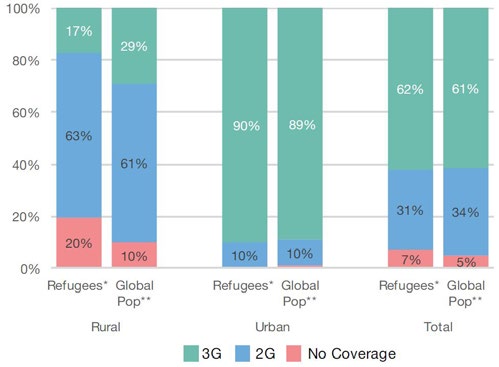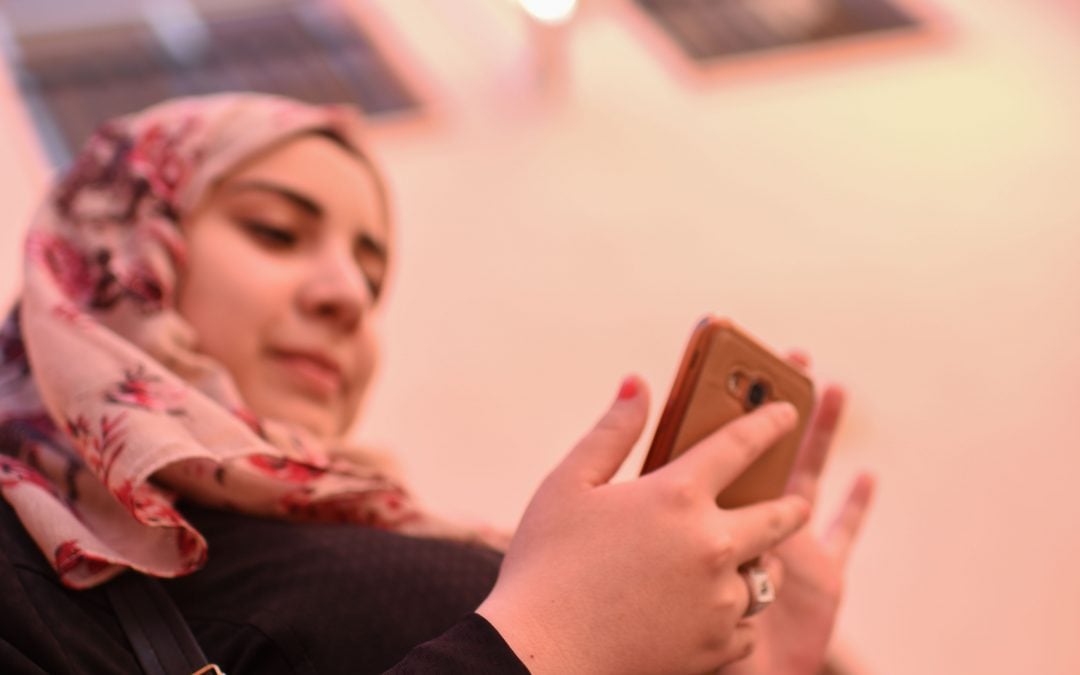Photo Credit: UNHCR Jordan
This article was originally a contribution to the International Telecommunication Union’s ‘Fast Forward Progress’ Report, which contains insights and experiences from 29 UN programmes as to how technology and connectivity are supporting the achievement of the Sustainable Development Goals. For more information check out the ITU’s website here.
The number of people compelled to flee their homes by conflict and persecution currently stands at 65.3 million – a level unmatched in decades. The vast majority are displaced in their own countries, or hosted in frontline countries within their own regions, often for many years on end. The refugee experience is in essence one of exclusion and disconnection. Uprooted from their homes, separated from family members, dislocated from their communities, and without the protection of their governments, they are effectively cast adrift.
Securing protection and solutions for refugees is fundamentally about fostering – and eventually restoring – relationships, by connecting refugees to communities, services and opportunities in the countries that receive them, and by cultivating an environment in which their rights are protected, and that allows them to flourish and rebuild a vision of a future. This means promoting their inclusion in national education and health systems, freedom of movement, access to livelihoods, and participation in local economies – laying the ground for the time when they are able to return home or to establish themselves permanently in another country. The inclusion of refugees, the internally displaced, and the communities hosting them in development frameworks is a central element of this approach, and intersects with the 2030 Agenda’s commitment to ‘leave no one behind’.
Internet and mobile connectivity are increasingly central to this process, and for many refugees, they have a similar level of importance as basic needs such as water, food and energy. Recent research carried out in 2016 by UNHCR and our partner, Accenture, revealed that refugees see connectivity as a critical survival tool, often prioritizing it over items such as education, clothing and healthcare. For many, it is a lifeline through which they can inform themselves about their new environment, access services and support (including cash transfers, digital education, and job opportunities) and become connected to the national and global communities around them. Connectivity also provides a platform for innovative, better-targeted programming by governments and organizations helping refugees, and helps facilitate two-way communication, including with people in insecure locations where access by humanitarian agencies may be limited.
At a very immediate level, connectivity allows refugees and the internally displaced to contact family members, to let them know they are safe, and to stay in touch with the situation back home. I saw this very vividly when I talked to Syrian refugees disembarking from boats in Greece last year, for whom their first concern was how to get online. After travelling thousands of miles, dealing with smugglers and risking their lives on the sea, the main thing on their mind was getting online and letting their family and friends know that they had survived their perilous voyage – this is no small thing.
Despite the fact that connectivity is critical to enabling refugees to overcome the dislocation and exclusion that characterize in their experience, for now the digital revolution is leaving them behind. Refugees are 50% less likely than the general population to have an Internet-enabled phone, and 29% of refugee households have no phone at all. In rural areas, around 20% of refugees live in areas with no connectivity (Figure 3), and language and digital literacy levels are also a barrier for many.
Mobile phone ownership is considerably higher in urban areas, where the majority of refugees live and where 68% of refugee households have an Internet capable mobile phone. In rural locations, the figure stands at just 22%. Globally, the proportion of people with mobile connectivity continues to increase, and the GSM Association predicts that, by 2020, there will potentially be nearly one billion more new mobile subscribers compared with 2016. But for people fleeing across borders as refugees, the challenge is not only providing an immediate connection, but ensuring that this is transformed into affordable, reliable, sustainable connectivity.

UNHCR has been working with a number of private sector partners to support transformative connectivity initiatives, and now has a Global Strategy for Connectivity for Refugees. Central to this strategy is the understanding that connectivity cannot be pursued through classic humanitarian approaches, but requires the engagement of a broader range of actors from the outset of an emergency – in particular, the private sector and government regulatory bodies – and must be informed by solid data and market analysis.
Since early July 2016, the world’s fastest-growing refugee crisis has unfolded in northern Uganda, where more than half a million refugees have fled a new wave of brutal conflict in South Sudan, now compounded by famine. Despite significant challenges, the Government of Uganda has continued its generous long-standing policy of allocating plots of land for shelter and farming to the refugees, in four new sites in the West Nile region, and giving refugees access to the same education and health services as Ugandans. The largest of the new sites, Bidi-Bidi, was established in August 2016 and is now home to 270,000 people.
The West Nile region has very limited infrastructure, including roads and electricity, and when Bidi-Bidi was established last year, the mobile network coverage across the vast settlement area was a patchy 2G signal at best. UNHCR’s Innovation Service has worked closely with three mobile operators to build the business case for expanded coverage, with the result that 3G connectivity has been achieved in large areas of Bidi-Bidi in a matter of months, with speeds fast enough for video calling. With at least 150,000 refugees now in areas with coverage, this is an excellent example of how sustainable connectivity can be fostered by looking at the opportunities presented by the presence of refugees, and the new markets that can be built up by and around them. Competitive pricing plans, mobile money services and free SIM cards have helped fuel the rapid expansion in access.
However, it is not only mobile operators and other private sector tech companies that support building a sustainable connectivity ecosystem. Connecting refugees is not only a matter of bringing in infrastructure, but also ensuring appropriate policy and regulatory frameworks. It also means overcoming barriers related to affordability, language and digital literacy. This may be less exciting that some of the latest 4G technology, but no less important.
Telecom regulators and other government agencies can create crucial incentives for technology service providers to expand their infrastructure and coverage, as well as electricity coverage. They can also play a key role in facilitating access to SIM cards and connectivity plans for refugees – for example, by reducing regulatory barriers linked to proof of identity (refugees may be unable to satisfy requirements for presentation of national identity cards or other forms of formal identification). They can encourage pricing segmentation practices to help people on low incomes access connectivity. Through cooperation between UNHCR, mobile operators and telecom regulators, and at an international level, the ITU, a legislative and policy environment can be established that facilitates better connectivity for both refugees and the communities hosting them.
The 2030 Agenda promises to ‘leave no one behind’ and builds on the principles of universality, equality and human rights for all. Reliable mobile and Internet connectivity is critical to ensuring that refugees are able to accessthe economicc and social benefits brought by the digital revolution, and to building broader connections between refugees and the communities and societies hosting them, as well as in their own countries. Through these connections, refugees are better protected, are able to become agents of their own development and that of the communities hosting them, and have the prospect of dignity and self-reliance. Ensuring access to affordable and usable mobile Internet connectivity is both achievable, and potentially transformative, and the private sector and national and international regulatory authorities can play a powerful role in making this happen.

